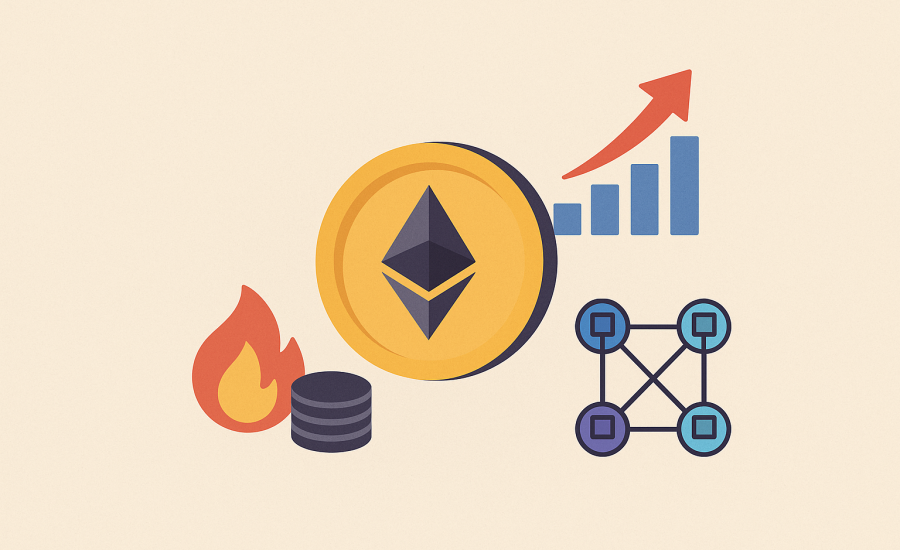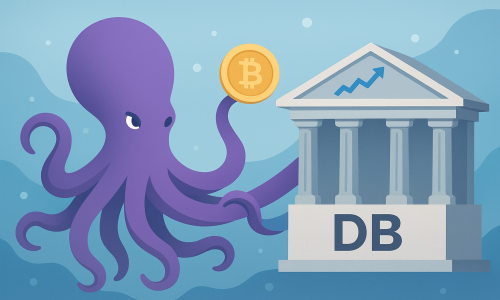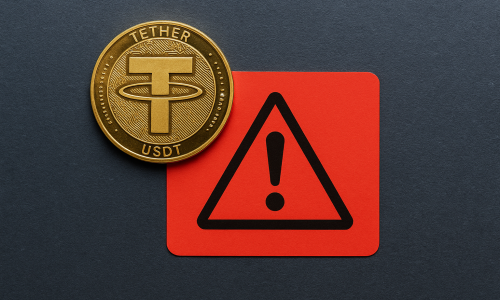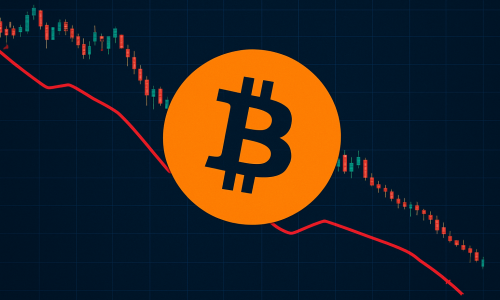Introduction
The Ethereum network has once again faced a scalability stress test, this time in the form of sharply rising gas fees that began to escalate in early June 2025. As transaction costs climbed above $18 per transaction—marking the highest levels in six months—the demand for Layer-2 solutions exploded. Ethereum’s persistent congestion has prompted users and developers to increasingly explore alternative infrastructures to avoid steep on-chain fees. This wave of adoption has brought Layer-2 protocols such as Arbitrum and Optimism into the limelight, not only as temporary solutions but as foundational components of Ethereum’s future.
The Surge In Gas Fees And The Layer-2 Lifeline
Layer-2 networks function by processing transactions off the Ethereum mainnet while anchoring data and security back to it. This design dramatically reduces costs and increases throughput, making them ideal for both retail users and decentralized applications. The growth in user volume, transaction count, and capital migration to these platforms in June 2025 is unprecedented. This shift is not merely reactionary but a broader evolution in how the Ethereum ecosystem is scaling to meet real-world demand.
Arbitrum’s Market Lead Amid Layer-2 Expansion
Among all Layer-2 networks, Arbitrum has emerged as the most dominant in this current wave of adoption. According to on-chain analytics platforms, Arbitrum saw a daily transaction volume increase of over 35 percent in the first half of June. By June 14, it had processed more than 2.5 million transactions in a single day, surpassing Ethereum mainnet’s activity. The total value locked (TVL) on Arbitrum also saw a jump to over $14.8 billion, reflecting strong confidence from institutional investors and decentralized application developers.
This growth can be attributed to Arbitrum’s reliable throughput, compatibility with the Ethereum Virtual Machine, and developer incentives that continue to attract new projects. The platform’s ecosystem has expanded rapidly, with new DeFi platforms, NFT marketplaces, and Web3 applications launching weekly. Importantly, Arbitrum maintains a reputation for low latency and high security, characteristics that are crucial for onboarding mainstream users.
Arbitrum’s native governance token, ARB, has also gained renewed attention, with trading volumes spiking across major exchanges. Analysts speculate that the sustained demand could eventually catalyze a price recovery and further incentivize community engagement in protocol governance. The layer’s dominance, however, is not uncontested.
Optimism Rises With Technological Innovations
While Arbitrum currently leads in volume, Optimism is distinguishing itself through rapid technological advancement. On June 14, Optimism announced the successful deployment of a new compression mechanism that slashes Layer-2 transaction fees by 40 percent. This upgrade has been well-received by the developer community, especially those building gaming and social decentralized applications, where microtransactions are common and fee efficiency is critical.
Optimism has also focused on composability, developer tools, and seamless integration with popular Web3 SDKs. Its ability to provide modular solutions tailored to dApps gives it a competitive advantage, particularly in enterprise environments and developer-centric communities. This month, Optimism also reported a 29 percent increase in active wallets and a 22 percent jump in gas usage—a proxy metric for protocol engagement.
Unlike Arbitrum, Optimism is more vocal about its vision for a unified rollup-centric Ethereum, which aligns with Ethereum co-founder Vitalik Buterin’s long-term roadmap. Optimism’s contribution to the OP Stack, a public Layer-2 framework, aims to standardize the development of scalable Ethereum-compatible chains. This open-source philosophy may position Optimism as a foundational layer for future app chains and sovereign Layer-2 deployments.
Broader Layer-2 Ecosystem: StarkNet, zkSync, Base And Beyond
The current shift in user behavior is not limited to just Arbitrum and Optimism. A broader suite of Layer-2 networks is also witnessing substantial growth. StarkNet, zkSync Era, and Coinbase’s Base network have each posted double-digit growth in daily active users this month. StarkNet continues to push forward with its zk-Rollup technology, which leverages zero-knowledge proofs to compress and verify large batches of transactions with high scalability and strong privacy features.
zkSync Era has positioned itself as a zkEVM-compatible Layer-2 solution, offering users a native Ethereum-like experience with near-zero fees. Base, the Layer-2 platform incubated by Coinbase, is gaining adoption through its seamless integration with the Coinbase wallet and exchange infrastructure. These networks not only add redundancy and competition in the Layer-2 market but collectively strengthen Ethereum’s long-term scaling narrative.
Furthermore, the concept of Layer-3 scaling—networks that operate atop Layer-2s—has begun to enter active development, promising even deeper modularity and efficiency in blockchain architecture. With this evolution, Ethereum is gradually transforming into a rollup-centric hub with many scalable “satellite” chains orbiting it, each optimized for different use cases, from DeFi to gaming to decentralized social media.
Impact On Decentralized Applications And The User Experience
One of the most significant outcomes of this Layer-2 boom is the rejuvenation of decentralized applications. Many dApps previously struggling with high user churn due to prohibitive gas costs are now experiencing a resurgence. Decentralized exchanges like GMX and Uniswap V3 (on Arbitrum and Optimism) have seen increased volume and liquidity inflows. NFT platforms are launching Layer-2 marketplaces, where minting fees are less than one cent, opening the door to wider participation in Web3 art and gaming.
Developers are also taking advantage of cheaper deployment costs and improved performance. Complex contracts, which would be prohibitively expensive to run on the mainnet, are now viable. This shift encourages experimentation and enables innovation, particularly in areas like programmable money, DAOs, prediction markets, and real-time data streaming services.
Moreover, users no longer need to choose between cost and decentralization. Thanks to wallet integrations and cross-chain bridges, moving assets between the Ethereum mainnet and Layer-2s is becoming increasingly frictionless. Solutions like Hop Protocol and LayerSwap have gained popularity, further streamlining the onboarding process for new users entering the ecosystem via these networks.
Gas Fees And Network Sustainability: A Cyclical Dilemma
While the Layer-2 surge presents a positive narrative, it also highlights the persistent challenges Ethereum faces around sustainability and user accessibility. The recurring rise in gas fees—even in a network transitioning to Proof-of-Stake—has raised questions about the underlying scalability roadmap. Although the Merge dramatically reduced Ethereum’s energy consumption, it did not inherently solve transaction bottlenecks. The roadmap ahead includes Danksharding and Proto-Danksharding (EIP-4844), but these upgrades are still months away from mainnet readiness.
In the meantime, Layer-2s are filling a vital gap, but they are also acting as pressure valves rather than holistic fixes. Their adoption is crucial, but the ecosystem must be wary of introducing excessive complexity for end-users. A fully interoperable, modular Ethereum is the goal, but it must not come at the cost of a steep learning curve or fragmented liquidity.
Investor And Institutional Momentum
The increased activity on Layer-2 networks has not gone unnoticed by institutional investors. Venture capital firms are increasing allocations toward scaling-focused projects. Arbitrum recently secured a $120 million ecosystem grant that will be distributed across DeFi, infrastructure, and developer tooling. Similarly, Optimism’s Collective is allocating governance resources to ecosystem growth and innovation funds.
Major exchanges, including Binance, Kraken, and Coinbase, have also integrated Layer-2 transfers, allowing users to deposit and withdraw crypto assets directly onto Arbitrum and Optimism without touching Ethereum Layer-1. This mainstream adoption underscores the growing consensus that Layer-2s are no longer optional—they are essential.
Furthermore, asset managers and decentralized autonomous organizations (DAOs) are actively migrating their treasury operations to Layer-2s for cost efficiency and transaction flexibility. This includes payroll automation, token distributions, and proposal voting. These shifts mark the beginning of a broader institutional migration toward Layer-2 native operations.
The Future Of Ethereum Scaling
As of June 2025, it is becoming increasingly clear that Layer-2 networks are not just auxiliary tools but essential pillars of Ethereum’s infrastructure. Their record-breaking usage is a reflection of broader ecosystem maturity and a practical response to Ethereum’s scaling limitations. With continued innovation in zero-knowledge technology, rollup frameworks, and user onboarding, Layer-2s are poised to define the next era of decentralized applications.
However, challenges remain. Cross-rollup communication, user experience standardization, and regulatory clarity are all active areas of development. The rise of Layer-3 concepts will also need to address issues of fragmentation and complexity. Despite these hurdles, the momentum is clearly on the side of scalability and decentralization.
Conclusion
As gas fees fluctuate and user demand continues to rise, the Ethereum ecosystem’s ability to adapt and scale will be defined by its commitment to composable, modular, and open infrastructure. Layer-2s are leading this charge, transforming Ethereum from a congested settlement layer into a thriving multi-layer ecosystem with global impact.



